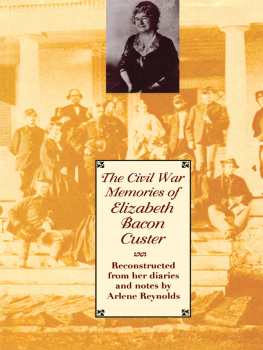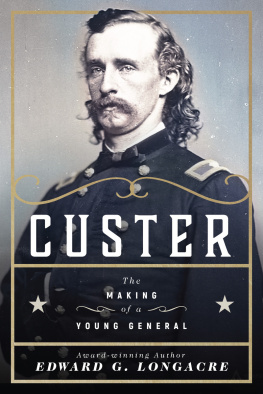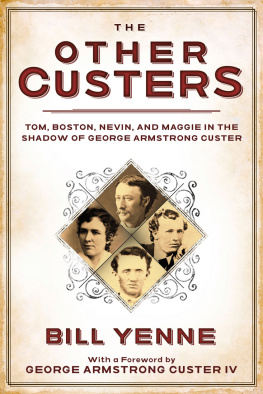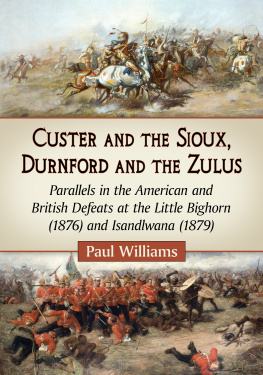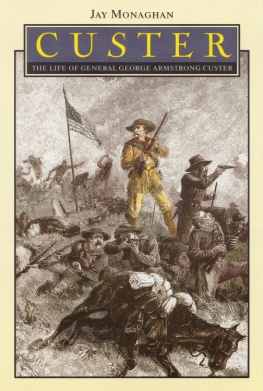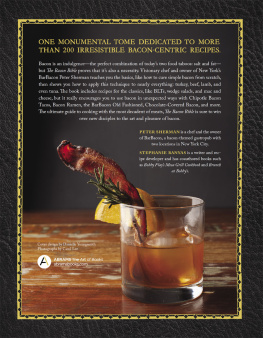The Civil War Memories of Elizabeth Bacon Custer
Reconstructed from her diaries and notes by Arlene Reynolds

UNIVERSITY OF TEXAS PRESS
AUSTIN
Copyright 1994 by Arlene Reynolds
All rights reserved
Printed in the United States of America
First edition
Requests for permission to reproduce material from this work should be sent to Permissions, University of Texas Press, Box 7819, Austin, TX 78713-7819.
utpress.utexas.edu/index.php/rp-form
Library of Congress Cataloging-in-Publication Data
Library ebook ISBN: 978-0-292-75505-5
Individual ebook ISBN: 978-0-292-78961-6
DOI: 10.7560/711686
Custer, Elizabeth Bacon, 1842-1933.
The Civil War memories of Elizabeth Bacon Custer : reconstructed from her notes and diaries / [edited] by Arlene Reynolds. 1st ed.
p. cm.
Includes bibliographical references and index.
ISBN 0-292-72250-8 (alk. paper)
1. Custer, George, 1839-1876. 2. Custer, Elizabeth Bacon, 1842-1933. 3. United StatesHistoryCivil War, 1861-1865Personal narratives. I. Reynolds, Arlene, date. II. Title.
E467.1.C99C79 1994
973.7092dc20
94-1759
All photos courtesy of the Little Bighorn Battlefield National Monument, Crow Agency, Montana, except where otherwise noted.
To Larry and my children, Larry and Amanda, for their love, encouragement, and support.
And to Libbie and her warrior bold.
Contents
L ibbie Custers War Book was a work in progress. She worked on it and talked about it for years, but there were no completed chaptersthough the sections on Auties early life and West Point, and parts of the Stevensburg narrative, may have been rough drafts. The notes she left generally consist of anywhere from one to several pages on a particular incident; some have unconnected episodes listed on the same page. In places, however, we have merely a sentence or two hurriedly scribbled on an envelope, or a brief notationoften repeated elsewhere in her writingsin a journal or notebook. She also kept letters from friends and strangers describing various incidents from the Civil War, which she intended to include in her book.
In editing her notes into book form I have tried to weave them together in a coherent and interesting manner, attempting to retain the same narrative style that she used in her other books. The notes were not in order, and most were undated. I have put the episodes described into as nearly chronological order as possible, using for reference points the battles mentioned, events in Washington, dates on letters, and Auties Civil War record. Unconnected incidents related on the same page in her notes have been separated and placed in chronological order in this book. Those few notes that were dated are from the 1890s or from 1924, and those used for the Epilogue were mostly written in 1917.
I did not use some of her notes because they could not be integrated smoothly into the narrative as I think Libbie would have intended it, or did not clearly state to whom or what they referred, or concerned her life after the Civil War. Libbie did leave lists indicating some of the things she intended to use in her book, and I have used all of these unless they could not be found. Among the items she lists are Auties adoration for General McClellan, social relations on picket lines, and Mr. Lincoln and a play about him. There are places in the book where Libbie refers to the present (the time she was writing the notes) or to some event outside the story; this was the style she used in her published books and I have adhered to that style.
In cases where there were various versions of the same incident I used the one which seemed to me to be the most polished, and in some instances I combined versions in order to give a fuller picture of the event. For example, her first encounter with Mr. Lincoln is mentioned in several places in her writings, including outline notes for a talk; I have joined these to produce the story told here.
Libbie often inserted letters from other people concerning the incidents being described at that point in her narrative. The quoted letters from Autie were edited by Libbie herself from the originals, and are part of her notes. In one or two letters I have edited out sections that do not deal directly with the Civil War or the event at hand, although the omissions have not always been noted here.
I have made every effort to keep this authentically Libbies book, and to retain her voice. The only changes I introduced were obvious spelling corrections, and additional punctuation as needed for sense; as these were notes to herself, Libbie was not overly concerned with grammar or with providing a context for the incidents related. Doubtless her writing style would have been more polished in her own final text, but in the interest of accuracy I have altered as little as possible.
Words that were unreadable have been noted by [] and those appearing in brackets I have added because they were obviously left out, or were necessary to connect partial sentences or to lend clarity. Names were spelled in various ways, and I have used the most common spelling. Libbie had written notesperhaps for a talkcomparing the Civil War and World War I. I have included them as an Epilogue because I felt they were historically important.
E lizabeth Clift Bacon, Libbie to family and friends, was born April 8, 1842, in Monroe, Michigan. The only surviving child of Daniel and Eleanor Bacon, she was educated at private girls schools in Monroe and New York. In 1862, at a Thanksgiving party, she was introduced to a young Union Captain, George Armstrong Custer, Autie to family and friends. They were married February 9, 1864. Of her life with Autie she wrote, I lived through a blaze of sunshine for twelve years, but on June 25, 1876, that life came to an end with the death of General Custer at the battle of the Little Bighorn. She later wrote: To lose him would be to close the windows of life that let in the sunshine. Other windows there are from whence comes light, but, oh, it is sunshine and the radiant sunshine of love that we women crave. What I have is like that little patch on our carpet that came about eleven in the old cardinals palace at Rome. I cant do much basking or growing but it serves to keep me in remembrance of rooms in my life where every corner was resplendent with sunshine.
Shortly after receiving official notification of her husbands death, Libbie left Fort Lincoln, Dakota Territory, and returned to her family home in Monroe. After a period of mourning she realized that she would have to do what she had once written she dreaded most, Having to take care of myself. With very little money, but a wealth of friends, she headed east to New York City, one of the few places in that day where a woman could hope to make her own way. There she acquired the position of Secretary for the Decorative Arts Society.
Having been encouraged to write by friends, and by her husband before his death, she began writing articles for the newspapers as a special correspondent. In 1885 her first book, Boots and Saddles, or Life in Dakota with General Custer, was published. She wrote a friend, Oh what intense anxiety I felt for fear my crude, inexperienced pen could not so frame a little story of his home life that anyone would be willing to read, She need not have been anxious, for the book was a success and was followed in 1887 by Tenting on the Plains, about their life in Texas, and in 1890 by Following the Guidon, life in Kansas. With the success of her books she became a sought-after speaker and for many years thrilled audiences with her stories of buffalo hunts and life on the plains. But with all her successes she still felt she had no right to bear my honored name as long as I could not pay tribute to him from whom it came.

